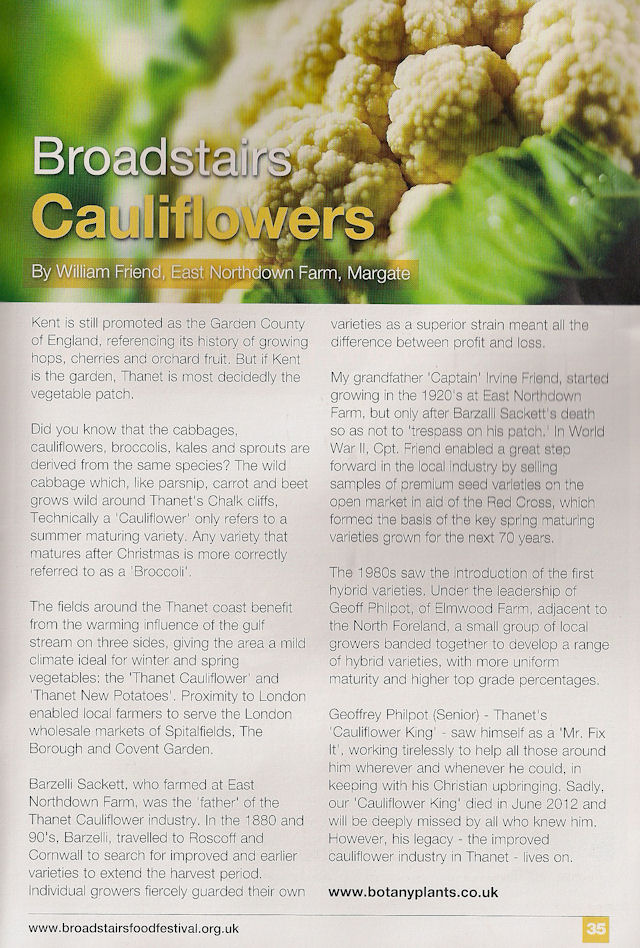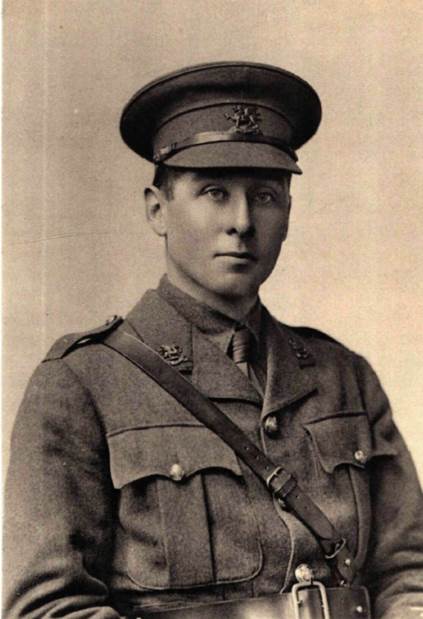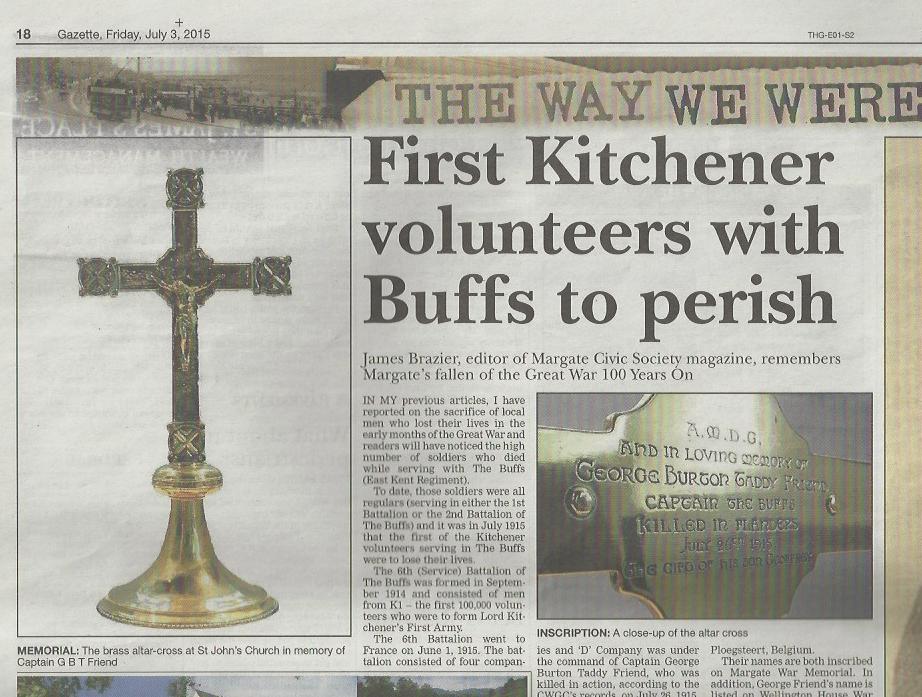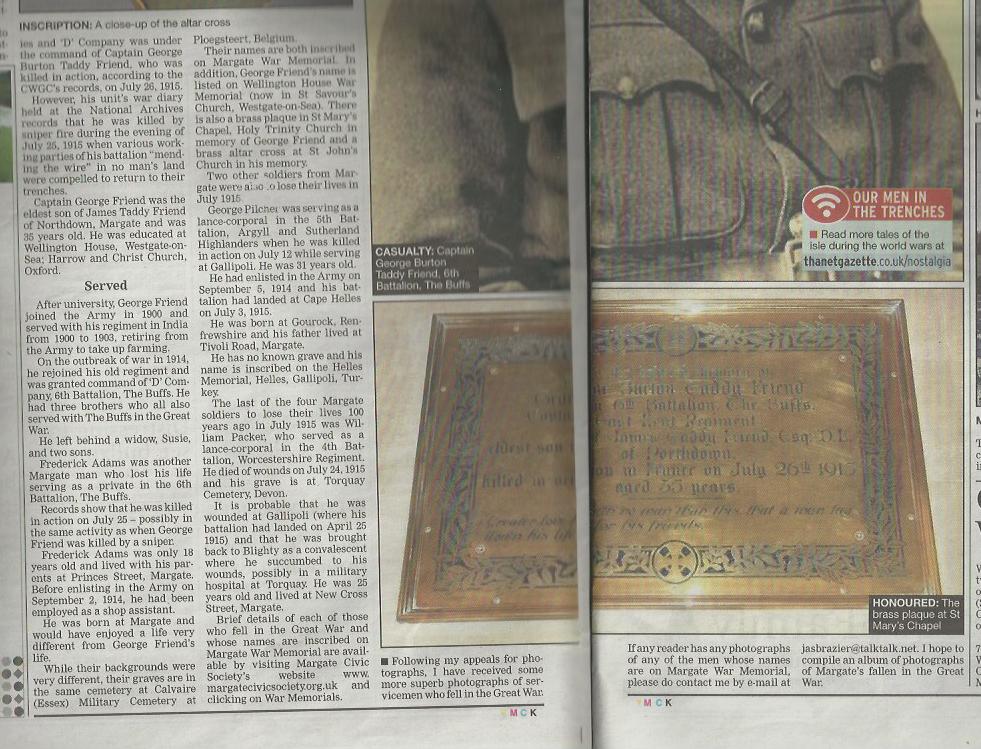Final End to 35 years of Legal Challenges ?
We, William and Louise Friend, are relieved to announce that we have finally defeated long standing legal challenges to our title to and claims of extra access rights over, our private road at East Northdown , for development of land at East Northdown House and grounds by Peter Robert Miles, beyond the express rights/easements first granted to him in 1982. Having reached a global settlement in 2013 , that was to be the end of all disputed matters , the other side has chosen to fight on for a further 8 years to avoid completion/registration of the original 1982 terms and the further agreed 2013 settlement terms. Only now that matters are no longer ‘sub judice‘ can we set out a record of some of the key claims , witness statements, and concluding orders and judgements. I try and do this in an impartial way setting out both sides of the argument in reciprocal witness statements , with 3rd party statements , judgements and decisions . The allegations, claims and challenges brought against us have been a terrible blight on our lives, and business interests, for over three and a half decades , an exhausting and debilitating struggle and a terrible waste of resources, but they had to be met and defeated before we could resume the normal lawful development of our and our tenants businesses.
The Northdown Estate has been in the Friend , Tomlin , Sackett families since records began. The 6 properties along the East Northdown private road, other than our farm and farmhouse, have each been granted easements, when sold, for use as a single private dwelling and with an obligation to pay towards the road maintenance costs. I came to run the family farm at East Northdown in the autumn of 1985 at the age of 21 , having freshly graduated from Christ Church , Oxford in agricultural and forest sciences. I took over the business from F.A. Steed t/a Steed and Nicholass Ltd in June 1986 , after 9 months as farm manager . Percy Walter Steed took the tenancy from my grandfather, Cpt. (WWI, Major WWII) James Irvine Hatfeild Friend, MC, JP, OBE (Irvine) in 1937. My father Irvine James Cowley Friend,(Bobby) started his dairy farming business in Staffordshire. Throughout this time , it was the responsibility of the farm occupier to maintain the road , on behalf of the family/landlord under the terms of their tenancy. My unmarried great aunt , Maude Irvine Friend , JP and scouts commissioner, held a tenancy for life of Lawn cottage , East Northdown House and East Northdown Cottage , from my grandfather , JIHF , which passed to my father IJCF on her death in 1963 as part of JIHF’s estate,( even though he predeceased her) . Maude was of limited means , so made no contribution to the maintenance of the road to her brother JIHF. The road , and all adjoining properties belonged entirely to James Taddy Friend , JIHF and IJCF in turn, until the sale of first of the six properties by IJCF, Oast Cottage, in the 1970’s . My father died in 2003 at which point title to the road passed to me and was finally registered in my name in 2011.
Oast Cot rd payment 77
1977 bill to Oast cottage for the agreed road maintenance charges.
13 02 04 George Goodall WS
2013 Witness statement explaining the road maintenance provisions at East Northdown
0 82 06 E N House contract .
The original 1982 sales contract setting out the agreed terms of sale and use of East Northdown House is now finally appended to the deed of grant on the title deeds of East Northdown House , Paddock and Orchard and my 2 access roads. The property may only be used as a single private dwelling only with no conversion of the outbuildings or other secondary dwellings or uses (other than a domestic horse paddock, with the orchard, for 4 horses ). A regular road maintenance levy was to be paid annually, which Mr. Miles paid each year until 1986, after which he refused to contribute.
0 82 IJCF to St Gore re terms of sale
The easements to East Northdown House were granted and registered at the Land Registry in accordance with the conveyance of the 5th November 1982 conveyance and 28th October 1982 statutory declaration of IJCF , declaring his title to the road .
0 82 10 28 IJCF stat dec for road
0 86 12 11 Road maintnc levy for 84, 85, 86,pd to IJCF
My father sold EN house to raise funds for death duties on my maternal grandfather, Sir Henry Hinchliffe’s estate at Mucklestone Staffs. My father always intended that one of the family would return to run the farm at Northdown in due course. I was the one who was interested in horticulture , whereas my brothers are a vet, a dairy farmer , and one sister has a fish farm.
The agreed sale price of £75,000 (£70k house, £5k for the paddock) reflected a reduced price for the property restricted in use to a single private dwelling , rather than full potential value of the site for unrestricted development and/or commercial uses.
82 E N H transfer
The 1982 transfer includes a protective covenant for East Northdown Cottage, that the use of the blue land , the side access to the garden paddock (and orchard) should only be used for ‘reasonable’ purposes’ -this covenant has always been registered at the land registry. Uses for new developments or uses that breach the terms of the 1982 sales contract , cannot be reasonable , and are therefore prohibited. The conveyance of the Paddock followed in 1983, with no separate easements granted for it, but only enjoying the same easement already granted in common with ENH.
A third parcel known as the Orchard , belonging to my four aunts , adjacent (but separate from) the third of an acre ‘Paddock’ became landlocked by the sale of East Northdown House , and was occupied by Mr. Miles in 1983 with the agreement of one of the Aunts , Mrs. Sheilagh Stanton. The Orchard did not enjoy any vehicular access at that time , but has only ever been accessed from the adjoining paddock. The Orchard , was rented by my gt aunt Maude Irvine Friend from my grandfather JIHF for £7/yr and upon his death this passed to his 4 daughters.
0 83 01 24 stat dec paddock
0 79 80 receipts for paddock, paddock not part of orchard
It was decided to sell East Northdown Cottage in 1985 , the elderly residents having died. The cottage needed complete renovation . A sale was agreed , but not completed with a local building firm . Mr. Miles was anxious to buy the property to free himself of the covenants protecting the property from disturbance etc. He made a threat in April 1986 that if a sale to a third party went ahead the ‘repercussions for you son will be endless’. A sale was completed to the Riordan’s in Autumn 86 , and the cottage and buildings lovingly and sympathetically restored by them.
0 86 Miles threat
My father reminded Mr.Miles of the terms of their sales contract , that there were no parking rights in the road, no rights for commercial uses or vehicular or independent access rights to my aunts Orchard area.
0 86 Miles threat rply 1
but the ‘repercussions’ of the sale of East Northdown Cottage, in terms of the campaign of retaliation against my seeking to uphold the original sales terms, and uphold/prove my title and control of the roads, have indeed been ‘endless’ as he threatened in 1986 (and 2005), and have resulted in crippling costs. Surely now these unsuccessful and unfounded challenges of 35 years can now finally be laid to rest?
0 86 10 ward valuation ENd ho, or pad
0 86 M to LR IJCF no title to road
The above valuation shows that the value of the ENH property for development, multiple dwellings or commercial uses, in 1986 , would be roughly 4 times the actual price paid for the property in 1982 , which was subject to restrictions to use the property only as a single private dwelling . The challenges and claims brought over the past 35 years start from this point in time up to the present, with the first letter to the Land Registry of the 9th of September 1986 , above challenging the truth of IJCF’s Oct 1982 stat dec for the Road. From this point on, Mr. Miles has sought to disprove my and my fathers ownership & control of the access road, to free East Northdown House and Grounds of any restrictions on their use by trying to establish that neither my father nor I exercise /ed any title or control of the road or retain /ed any ‘benefit’ as owners of any of the 1982 ‘retained land’ , and thereby establish unfetterred access rights for unrestricted commercial or residential development at ENH . In 1990 Burtons spelt out this argument – that the covenants no longer apply as Mr I.J.C. Friend no longer owns any ‘retained land’. This was not the case as IJCF DID still own the access roads, which passed to me on his death in 2003, I managed the roads on his behalf prior to his death, and ‘benefit’ of the covenants also passed to the new owners of the other land retained in 1982 and sold subsequently, East Northdown Cottage and Lawn Cottage . This is the cause of Mr. Miles grievance against me and the Riordans – he wrongly perceived that none of the family would have any interest in or grounds to uphold the covenants after the sale of East Northdown Cottage in 1985/86, leaving him free to develop East Northdown House, Paddock or Orchard , as envisaged in the 1986 Ward valuation for many times his original purchase price of the ENH and ‘ Paddock’ , or oppose his adverse seizure of and subsequent development of ‘The Orchard’.
0 90 05 8 Burton to W & B benefit of land moribund
A second thread to the argument over rights of way over the road , has been to dispute the 1983 stat. Dec , with regards to IJCF’s title to ‘The Paddock’. He tried to argue that The Paddock formed part of ‘The Orchard’ left in my Grandfather’s will to my 4 aunts, claiming IJCF’s Stat Dec. of Jan 83 was false . On this pretext he claimed a right of way to the Paddock and adjoining Orchard , deriving not from my father , but from my aunts’ prior title , independent of the restrictive covenants imposed by my father. The receipts for the paddock grazing above show that my father, alone, not my Aunts, received the rent from the Paddock following MIF’s death. The land transferred to my Aunts in my grandfather’s will was the Orchard only , which is about an acre, and did not include the Paddock of about 1/3rd of an acre extra. The Paddock was mistakenly thought by the family to form part of the land vested to MIF for life. The Orchard and Paddock combined amount to 1.33 acres , not the 1acre referred to in JIHF’s will. In about 2007 Miles made allegations against the Land Registrar , questioning his own route of title to the Paddock . The land registry complaints reveiwer produced a 26 page report dismissing these claims and begging the question as to why would anyone question their own route of title, when nobody else ever done so ?
In 1990 we initiated proceedings to rectify the East Northdown House title to include the full terms of the contract . We have also sought to settle the dispute by repeatedly offering (2010, 2019) a means of access for further development (and full title to the Orchard in 2010), by a route from the upper part of the road and through the Orchard that would not unduly impact on neighbouring listed dwellings and could be brought up to necessary highways standards without undue harm to the heritage assets.
A rectification claim was brought by us in 1990 – this is a simple process to align the transfer documents with the agreed contract. However instead of acceptance, this application was opposed by a complex counterclaim, relating in part to claims to title of ‘The Orchard’, defamation claims , fraud and other such matters.
In 1993 I discontinued our rectification claim , due to the spiralling costs (out of all proportion to the value of the Orchard etc.), my father’s deteriorating mental and physical health with Parkinson’s disease , and my lack of information about, and therefore my inability to counter, the matters raised in the counterclaim.
The 1990’s counterclaim set the pattern for future relations – any attempt to resolve , ‘rectify’ or negotiate a settlement, have been met by further counter-claims and allegations, not engagement. This strategy succeeded in leading me to waive my costs in 1990-93, and again in 2013 , but I did successfully refute the challenges being made to the established position on each occasion.
The Orchard
I did not know then, that the two claims of part performance and estoppel being threatened against my aunts at this time and again in 2009/10 had already been assessed as having ‘absolutely no merit ‘ for the reasons set out in the Stephens and Scown 1991 letter , nor did I have details, then, of the other matters being threatened, that were only ‘disclosed’ at the 11th hour by further direction of the court, by which time I had already taken the decision to discontinue, due to the spiralling costs of over £10,000.
0 91 09 24 stephens and scown to M resp. to M orchard title claims 1
In 1999 Miles started an adverse possession claim for the Orchard , his first 99 Affadavit was broadly true , but the land was in the registered possession of my aunts with their knowledge and consent (initially) and twenty years of ‘adverse possession’ had not elapsed. In 2009 Miles submitted a second adverse possession claim with a fresh affidavit . He added a series of extra embellishments under oath to strengthen his claim – which he must have known to be false, as the contents of the affidavit do not correspond with the 1991 correspondence .
1)Mr. Miles never had any dealings with Lady Creasy , who at the time lived in Oman as General Sir Timothy Creasey was chief of the Sultan’s defence force, and effectively his 1st Minister/adviser , he never claimed such a meeting until 2009. 2) No contract was entered into , Mrs. Stanton was not authorised by the other owners to proceed, who were not even consulted until their stat decs were required for first registration in 1985/6. 3) The cheque for £4,000 was paid to his own solicitor handling the first registration of the Paddock, in his words to be ‘held to my order until completion is in site,’ . 4) He always knew that no transfer or sale had been completed , hence the estoppel and part performance claims, and that the first registration , a pre-requisite of any such sale , for the Orchard in the names of the 4 co-owners was not completed until 1986. 5) The land was subject to a trust , all this is clearly apparent from and set out in the contents of the Stephens and Scown correspondence of 1991 above.
0 99 M claim of Orch aff 99 & 05 v2
A case management conference was held at the Land registry offices in London in March 2010 looking at the two live cases of that time , Miles’ opposition to my application of first regististration of the road, and Miles application for title of the Orchard , by three potential means, Estoppel, Part Performance or adverse possession . It was established that unless Mr. Miles could demonstrate full title of the Orchard by part performance or estoppel , he could not show he was the legitimate successor in title to my aunts , potentially benefitting for any interest in the road. Mr. Miles accordingly agreed in court to an undertaking to withdraw his objection to the first registration of the road , if he failed to prove full title of the Orchard , but only possessory title by adverse possession.
10 03 16 road CMC LR Adj DIRECTIONS ORDER
In May 2010 we also offered to settle the dispute by offering to complete on the orchard in return for the legal costs expended up to that point , together with access for development according to standard commercial ‘uplift’ terms . No response to our offer was received. A condition of the offer was that there were to be no more unreasonable objections to our planning permissions (or their implementation!) until 2030. If only…….
10 04 29 JS to M 1st HofT for settlement
In 2010 we were finally forced to concede possessory title of the 1 acre ‘Orchard’, on the basis of adverse possession (only). We could not contest , that although occupied under a license, no rent had been paid since 1983. The other two claims of full title by part performance and estoppel still had ‘absolutely no merit’ however ! You cannot claim rights of way enjoyed by a previous owner if acquired by adverse possession , you can acquire rights by long user by a new route , for new use, or uses carried out covertly. Mr. Miles acceptance of possessory title by adverse possession , rather than full title by any other route , triggered the March 2010 undertaking to withdraw all objections to my first registration of the road application. Predictably matters took another year to conclude . see 1st reg award of costs below .
The Orchard remains a land locked parcel of woodland, having no means of access other than on foot from the Paddock of East Northdown House. It is protected woodland in a conservation area, next to Northdown Park and subject to a tree preservation order. In 2013 we granted a right of access to it, in common with the paddock , for use as a paddock (only- not any other uses, or commercial uses ), to be subject to a deed of grant , to be registered against the various titles. The paddock in turn was to be granted access in common with the orchard as a paddock , and could also be used for storing building materials, ancillary to the use of East Northdown House as a single private dwelling – only . This additional grant of access, only confirms the rights granted in 1982. The easement is not severable from the rest of the property and the paddock and Orchard cannot be enjoyed separately from the domestic use of East Northdown House as a single dwelling.
25 years of Allegations against Commercial Use of East Northdown Farm to TDC and other Public agencies, centred on ‘unauthorised use’ of and damage to the Road, from 1986 until completion of 1st registration in 2011.
0 86 11 – 87 3 4 re alternative road maintenance agrmt
0 89 06 26 Cmpt re farm shop portacabin s64 det 91 05 24
0 96 M objections to O licence renewal
0 98 03 11 M obj B1 CoU
As explained above , the grounds for refusal to pay the road maintenance levy, as set out in the agreement and transfer, and the claim of unfettered access rights over the private road for purposes beyond those express rights in the agreement granted to him, was based in turn on a claim that my father was never the owner of the road, that I did not have due authority , to act as his ‘agent’ to carry out repairs to the road, or from 2003 as his successor in title to the road. Indeed , Since 1986 Mr. Miles has progressively sought to overturn the true position , completely on its head . He has not only argued to public agencies that the road no longer belonged to IJCF or Me, but that HE was the owner and that it is I that enjoyed no access up the road and that vehicles accessing the farm were therefore trespassing on his road and that I was liable to pay Him compensation/ damages for the cost of repairs. (see counsels opinions and letters to the LR below).
from 1998 – 2005 , he called for my business centre planning permission to be rescinded and for my prosecution for fraud for falsely claiming my father was owner of the road !
0 98 04 06 M to DB prsc WF for Fraud
Extraordinarily , he still apparently clings to this position, in his latest planning objection of this year , 2021, even after the 2011 first registration with costs awarded against him , the 2006 TDC review of his planning allegations, the 2013 settlement , his 2019 and 2020 defeats in court and registration of his true limited express rights granted in the deed of grant.
He has tried to assert that the farm and business centre are subject to the same restrictions on commercial uses as my father and I have placed on the easements we granted to the residential properties along the road on some kind of reciprocal basis.
Throughout this process Mr. Miles has not understood that even if a piece of land is unregistered , it does not mean that nobody owns it. The land registry accepted the 1982 and 1983 stat declarations for the paddock and road , stating my father’s title to them and granted Miles title to the Paddock and express rights over the road accordingly .
0 97 06 12 WF to GG, PM, NP & PM re road rep.
0 97 06 George Goodall re Road repair
I tried to undertake limited repairs in June 1997. Two neighbours contributed £200 each . Neil Piper had moved house. Two new houses were granted easements on thev same terms in 2005 so All Five other neighbours contributed to my 07 and 09 repairs to the road.
06 04 M to LR re reg of road
07 07 M to LR re road title
06 LR title numbers
The claims of title to the road under ad melium filum presumption , and of proscriptive rights over the road, both lose sight of the fact that the express registered rights East Northdown House enjoys were granted for it , and for all the other properties fronting the lane, by my father and registered on the ENH title , on the basis of my father’s title to the road being accepted by the land registry in 1982 . At no point has Mr. Miles suggested that he wished to give up the express rights granted by my father and registered against his ENH title , but only that he wished to secure additional rights, and deny the reciprocal obligations and restrictions on the express rights enjoyed.
The land registry have always made it clear that this is not how it works !
05 06 LR to M re title and rights over road 06 05 LR to M re title and rights over road
Decades of trouble, expense and heartache could have been saved had he accepted this advice earlier – that his position was untenable/ ‘great difficulty’…unlikely to be successful’ , and had he shared this advice, and the terms of the 1982 contract and conveyance with his own legal teams over the years . The 2005 counsels opinion below and all the claims based upon it were all founded on the entirely false premice that I.J.C.Friend did not own the road and that there was no mechanism in place for the maintenance and repair – both untrue and both quite clearly apparent from reading the November 1982 transfer , which Miles did not show to his own barrister ! There is a basic principle in law that one is ‘estopped’ from both benefitting from express rights granted by the owner of a roadway or other property , then challenging the owners title to that property , and then claiming the rights enjoyed were established by proscription or other means , either the rights were validly granted or they weren’t. either -or, not both!
05 01 05 Cnl opnn road nuisance claim
07 05 22 WF to KCC re road repairs & title
By 2007 , I set out my own proposals to KCC highways officers for my repairs to my road , and my legal position , and I was forced to incur the expense of proving my title and registering the road in my name, in the face of Miles objections, to prove the true position of my title to the agencies in the face of Miles’ allegations against me.
05 Miles petition against bus cntr.
05 05 Miles Threat
Instead, of accepting the LR advice that his claims were ‘unlikely to succeed’ , two years after my fathers death the concerted campaign of allegations against me to public agencies to subvert my control of the road and harm my business and livelihood was intensified .
05 03 22 M Obj to bunnet, TDC re Rd
The crux of the dispute is in spelt out in the second paragraph of the letter above ‘I am contemplating an application myself and my proposed additional use would be compromised by the current condition and use of the road.’ Mr.Miles sought to deny access for me, my tenants, my farm traffic and the other adjoining properties, in order to establish with the LPA and HA that there would still be sufficient ‘spare’ capacity’ remaining along my private single track unadopted road for his own ‘additional use’ -in clear breach of the 1982 contract terms and of planning policy on the number of dwellings that can be served by a narrow single track unadopted road with no footpath , and to force multiple agencies LPA. L Reg, Police , KCC and others to shift the burden of costs to upgrade the road to an adoptable standard onto me, on the one hand whilst denying my title to and control of the road on the other.
This campaign was endorsed and supported by Council leader Sandy Ezekiel and Cllr Martin Wise.
white Miles Ezekiel 06 10 Wise Albon re C1  The Miles’ and Rowland- Spinkes’ were close political allies of Sandy Ezekiel and the Wises at this time, Peter Miles is godfather to Martin and Deborah Wise’s daughter. They have all since apologised to me, with hindsight for ‘backing the wrong horse’.
The Miles’ and Rowland- Spinkes’ were close political allies of Sandy Ezekiel and the Wises at this time, Peter Miles is godfather to Martin and Deborah Wise’s daughter. They have all since apologised to me, with hindsight for ‘backing the wrong horse’.
07 06 04 LR attendance note re road police
06 04 08 Albon TDC A Huch Highways re road
I was faced with conflicting allegations that I had no right of access up the road , no right to maintain the road , but a liability for my lack of repair to the road ! Even though the main access to my garden and business centre is and was via the main entrance off George Hill Road , Mr. Miles argued that my planning permission for the business centre should be rescinded , as I had no legal right of way up the private road , and that I had misled the council in 1987 , by serving notice on my father , instead of him, as the owner of the road.
07 06 06 WF to AH highwys re repairs
I finally brought the road up to full repair in several phases , with the full blessing of the highways authority and the majority of neighbours who made the contribution asked of them.
05 06 13 Main Obj re Bus . Units
06 04 3 obj unit E f th 06 086
Mr. Miles attacks against me initially focused on the ownership and control of the road ,but broadened out to include my use of the road for commercial purposes and then focused on attacks on the development of my garden centre and business centre as a whole .
06 Than Gaz ‘latest round in Farm Fued’
06 Tenants Petition
Thanet Dictrict Council investigated all these complaints at length in an in depth review of the 50 or so allegations made.
Miles refused to accept the Councils findings in 2006 and referred officers to the LAO. TDC stated that it would be for the LAO to decide whether TDC had investigated the complaints sufficiently.
06 06 13 memo re Miles v TDC refrd to LAO
Agreement was reached between mw WF and TDC, that the way forward was to reach a settlement between the parties , and a farm plan for the ongoing development of the farm, garden and business centre .
08 06 WF to Fitt re conclusion of review
08 12 WF LAO complaint form
09 01 TDC Vexatious complainants policy
Following the subsequent report of the local authority ombudsman into the investigations, TDC adopted new policies on handling vexatious complainants in January 2009. Following the allegations re road repairs , I undertook , to the various agencies to establish my title to the road and made a renewed application to the Land Registry . This was opposed by Miles on the basis of his claim under ad melium filum , and also as the owner of the Orchard and paddock as my Aunts legitimate successor in title – see The Orchard , above and the settlement terms offered in April /May 2010 to settle the Orchard case .
09 10 WF RD SofC
see undertaking given at the CMC in March 2010 regarding the Orchard case above
Having failed to gain a response to our april 2010 HofTerms , and having conceded the title of the Orchard on the basis of adverse possession , we offered a second amended set of terms regarding the remaining unsettled matters
10 07 JS 2nd HOT M rejctn counter terms. predictably these terms were also roundly rejected and met with the ‘nuisance ‘ counter claim , explained below .
11 07 10 M to JS re HofTs , WF comments despite this , Mr.Miles wrote to Mr. James Squier , that agreement had been reached , and accordingly he was not liable for costs of his opposition to my 1st Registration claim . Mr. Squire responded , with his recollection of events. 11 07 22 JS to PM reply re costs 11 07 10
The LRadjudicator , approved my first registration application , and my application for costs, finally overcoming the above objections of 25 years previously .
1st registration of the road
Legal Claims of Damages and Proscriptive Rights 2010 – 2013 .
The above attempts were made by us to reach a negotiated settlement to the dispute and come to normal commercial terms to end the dispute by offering to grant access for the development of the orchard , paddock and main house grounds via a new access point bypassing the groups of listed buildings and unsuitable narrow accessways – but these offers were ignored . The first registration of the road should have signalled the end to all such attempts to claim easements over the road for development of East Northdown House , beyond the express rights granted in 1982.
Despite all this, Instead of acceptance or engagement with our offers in 2010, he was preparing two further sets of proceedings against me.
10 11 19 Templeton’s ltr bfr claim for Defmtn re coach ho. & WF reply 10 11 15 WF to neighbours re further road rprs
10 12 07 TEMPLETONS 3 claim of perscriptive rights 10 12 9 WF repsp to Templeton’s 3
A claim for multiple rights of way was made over the private road, that if granted, would have gone well beyond those granted in 1982 -being those for reasonable purposes ancillary to the use of the property as a single private dwelling. The additional rights sought would have included rights of way over the ‘blue land’ that breached the covenants benefitting the occupants of East Northdown Cottage
12 06 27 persc rts Miles 1st amendedstatementofcase 12 11 2 persc rts signed WF Defence
09 Mitford Slade Damages opinion
As seen above Miles had used objections against my business uses as a negotiating lever for the previous 25 years , all these allegations had been thoroughly investigated by the LPA and other agencies . The Mitford Slade opinions of 09 ,18,19, and the nuisance claims based upon them, increasingly build on the false premises of the 2005 road nuisance opinion, that there is no known owner of the road, that I have no right of access over it , that the private is being used as the main access for the commercial uses of the farm , that this use is new and illegal and so on . The basic premise appears to be that I am liable to compensate Mr. Miles for the ‘diminution in value’ of ENH arising from my attempts to ensure ENH remains in use as a single private dwelling , rather than its potential development value of the property for multiple dwellings and uses with unfettered access over my road – and in fact has nothing to do with my use of or my maintenance of the road – which are just used as a pretext for a claim. All such claims should have been ‘put to bed’ by the 2011 road 1st Registration , that demonstrated that the easements were validly granted , and the programme of road repairs , up to its historic standard , carried out with no reference to or contributions from Miles. We had offered access on normal commercial terms in search for a reasonable settlement, made every effort to minimise any use of the road for our own commercial uses and maintained the road in good order without any contribution from Mr. Miles.
1st Berryman letter of claim
12 04 05 nuis. DEFENCESIGNEDBYCLIENT
our offers have always been responded to by issuing further threats and claims. The 2010/11 claim of nuisance and damages against me was made on issues that had already been subject to the TDC , highways, police and land registry investigations. A defamation letter of claim was also served on me in Oct 2010.
10 06 Email to Colin Fitt re Berryman letter of claim
The claim for damages was in large part a ‘re-run’ of the allegations against me investigated by TDC in their 2005-09 planning review and of allegations about the repairs and maintenance of the road resolved by the 2007, 09 repairs and should have been ended by completion the first registration in 2011.
13 07 12 WF to PM Final Global offer
The proscriptive rights claim over the my road , came before the land registry adjudicator in July 2013, for a scheduled 3 day hearing. The offer to settle , above was made . The damages claim against me was stayed pending conclusion of the 1st claim. After the site visit a global settlement was reached resolving all issues . The agreed terms were set out in a court order , known as a Tomlin Order. There was no cause of nuisance, no proscriptive rights, the road and walls belonged to me, . A deed of grant was to be entered into , setting out the scope of the rights of way enjoyed – only those in the original 1982 contract – to use the paddock(and Orchard) as a paddock for no more than 4 horses, and to use the paddock for storing building materials used in association with the maintenance of East Northdown House as a single private dwelling. An indemnity was given by Mr. Miles to me for all my costs – beyond the original drafting costs of £1,000, of completion of the registration of the deed at the Land Registry. My costs of defending the nuisance and proscriptive rights claims against me, (£80k for each claim), that should have ‘followed the event’ , were waived, giving a cost neutral settlement, as were all past and future road maintenance contributions, as part of the price of achieving the final and lasting end to all the legal challenges against me I was seeking. No further claims over any old issues known of in 2013 were to be made, in particular no objections to the use or maintenance of my road.
The Tomlin Order was concluded as a global settlement of all issues
13 07 Tomlin Order
Completion of the Deed of Grant in accordance with the 2013 Tomlin Order, July 2013 – Christmas 2020
Amongst those issues know of at the time were my existing business and garden centre uses at East Northdown farm , and my use of my own road to access my farm buildings.
A farm proposal plan was submitted to TDC at this time to confirm my plans for the ongoing future use of my farm to continue in my long established garden and business centre uses , rather than the alternative – to enter into a purely residential redevelopment scheme for the area of my land in the urban area , which would have signalled the end of the use of the farm as independent agricultural holding , garden , business centre and community hub.
,13 POTENTIAL_MASTERPLAN-308230
13 12 20 JT to WF re ENd planng propls
12 01 22 WF to MO re LAO and Standard’s Board invig. 12 01 22 WF to MO re LAO and Standard’s Board invig. see my post about the Northdown Coach House
Clearly these statements above, were not defamatory , as they were/are my truly held beliefs , submitted only to the relevant investigating body charged with investigating the allegations made against my wife and Cllr.Johnson by Mr.Miles and Cllr.Wells , upon a direct request to do so by the investigating authority, in response to the ‘prior attack’ made . My testimony was upheld , Cllr. Johnston was exonerated, and Mr. Miles was also finally declared a vexatious litigant/complainant by TDC over these matters, by Mr. Patterson .
My submissions to TDC regarding the harassment I suffered , from enforcement action by TDC, and the maladministration of TDC resources ,submitted to the LAO and Monitoring officer in Nov 2008 (endorsed by Sir Roger Gale) were finally brought to a conclusion with the conviction and custodial sentence of former Council Leader ,Sandy Ezekiel. Planning enforcement officer ,Steve Albon, gave evidence in court of how he was pressured to take enforcement action , and use TDC’s compulsory purchase powers against those targeted by Cllr. Ezekiel for his own financial and political gain. The case was prepared by the Monitoring officer from the best of the evidence he had available . He presented that evidence to the CPS.
Ezekiel Trial 13 Ezekiel behind bars
Despite the generous cost neutral terms of the Tomlin Order , we were unable to complete the deed in 2013 or early 2014. Our chasings letters, seeking to conclude matters, were ignored. Unreasonable letters of objection were made to TDC in 2014 and 2016 renewing the old patterns of allegations against my planning applications and uses in breach of the agreement. I could see we would be back to square 1 unless we pressed ahead with the conclusion of the registration of the Deed in accordance with the 2013 settlement and ensured the terms of the order were met and upheld.
WF 1st Witness statement
M 1st Witness statement
Our service of our claim for the court to determine the terms of the Deed of Grant, firstly crossed over with yet another counter claim for defamation and harassment against me
17 10 24 Partcs of Claim Defmntn
and secondly was further blocked by an application to ‘strike out’ our claim.
17 12 11 M DoG WITNESS STATEMENT II
WF 2nd Witness statement
The 2017 defamation claim was withdrawn at Christmas 2017 and some costs paid. Two days of mediation at the international dispute resolution centre in Fleet street were held in 2018 . The 1st mediation session started with the warning from the mediator that if matters could not be settled , then the further costs of taking it to court would run up to several hundred thousand pounds , as has been the case. I had nothing to gain from the proceedings – other than the peace of mind of completion of the agreed terms Tomlin Order , so it appears my neighbour gambled recklessly on the fact that my pockets would not be deep enough to see things through, if he stalled things long enough, even though he had indemnified me for my costs in doing so.
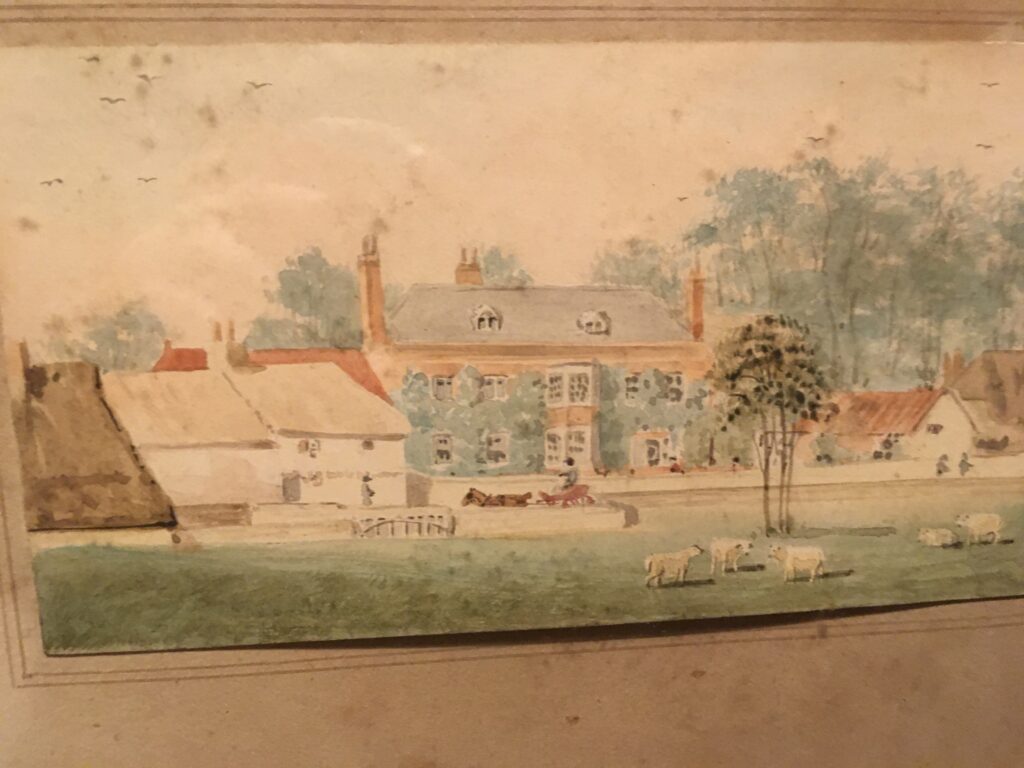
 objection
objection
Appeal refusal
2nd appeal dismissed
OL_TH_19_0802-SITE__BLOCK_PLAN_AND_SITE_SECTION-697355
Repeated planning applications were made at East Northdown House , relating to the potential division of the property into separate dwellings and apartments, conversion of the existing garage for accommodation, building a new two story ‘triple garage’ , and ending with an application for two new dwellings on the paddock – all in breach of the terms of the Tomlin order, Deed of Grant and 1982 ENH sales contract.
18 10 04 Miles list of demands for JS negotiations
18 09 Doug Brown’s sketch plan proposals for ENd development 18 10 03 WF to DB re settlement 18 10 03 WF’s sketch plan for discussion
Following mediation we tried again to seek common ground in negotiation , but the list of Mr. Miles’ demands were impossible to meet. They kept reverting back to all the same issues since 1986, covered and finalised by the 2013 Tomlin Order. In particular in points 8 and 9 he sought the abandonment of the hard won agreed terms of the Deed of Grant completely -defining the terms of the easements he did enjoy and the complete cessation of all my commercial businesses at East Northdown -i.e the total closure of my farm, garden centre and business centre !?!
Mr. Brown’s proposals for a ‘joint development’ unrealistically sought diversion of all existing traffic through my private garden and my nursery site , redevelopment of East Northdown Cottage. I suggested that a scheme could be agreed that diverted all traffic for all new developments at East Northdown House , paddock, Orchard and Gardens ’round the back’ via an new route through the orchard from an improved upper section of Road to take the extra traffic- but NOT via the narrow access past East Northdown Cottage.
We repeated our previous offers of 2010, to provide a means of access for what we believed he was truly seeking , but based on concluding , not amending or abandoning the deed of grant as a first step, and compliance with the Tomlin Order to end of the dispute.
18 08 03 JS to PRM 19 02 18 HofT JS to Miles 19 02 18 offer plan
No progress could be made for as long as the deed of grant terms in 2013 remained unsigned and unregistered, or without any willingness to observe the other terms of settlement .
enforcement officer visit notice re f th 15 0221
19 02 M JS re permissions ind use high end dev
19 03 26 PM to Bidwells JS
19 04 WF to Enf Off further complaints likely
19 04 10 WF to Enf Off re new complaints
19 08 05 letter of claim nuisance
In the summer of 2019 Mr. Miles also resorted to his old practice of making allegations of planning breaches against me. As usual these were repeats of old allegations that were decades old , against uses and permissions established for decades with all appropriate express or deemed permissions and consents in place. TDC is/was not obliged to re-investigate old settled issues , or where there was no public harm caused. In 2013 we had agreed a farm proposal plan with TDC to continue and enhance our commercial uses , rather than residential redevelopment , and planning approvals granted on that basis .
19 08 01 Mitford Slade opinion
WF 3rd Witness statement
The strike out application was due to be heard in August 2019 . Mr. Miles’s supporting evidence included a copy of his further draft particulars of claim issued a few days before the hearing . This was a repeat of the letters of claims made in 2018, the discontinued 2011 nuisance claim, the 2017 discontinued defamation claim and the 2010 defamation letter of claim. They were therefore in breach of the terms of the 2013 global settlement – that both parties intended to end the dispute and would not repeat past , settled legal claims. It was again based on the expert opinion of Mr. Miles’ chartered surveyor – Mr. Mitford Slade on the same terms raised in his 2009 letter – before the registration of the road or 2013 settlement as if neither had occurred.
19 09 26 FP response to dPoC nuis def
The 2018 and 2019 letters take no account of, nor even makes reference to, the maintenance provisions for the road set out in the 1982 transfer , to the planning review or LAO findings , to the repairs undertaken in 2007 and 2009, the 1st registration of the road and costs award of 2011 , to the limited scope of the access rights set out in the original 1982 contract, nor to the subsequent provisions set out in the 2013 Global settlement or Tomlin Order . It holds me responsible for the continuation of the dispute and the consequent blight on property values, not vice versa. Mr. Miles’ strategy of bringing claims and allegations against me to deter me from my purpose of defeating his claims against me seems in part to be due to his success of his counterclaims in 1993 at ‘heading off’ my 1990 rectification claim .
Friend v Miles – Approved Judgment – 05.11.19 v.1
SealedOrderDDJEyleyreDsapplicationdated111217tostrikeoutapplicationdismissed-V1
The strike out hearing was held in August 2019 and judgement handed down on 5th November 2019 . The strike out application was dismissed and costs awarded . Even then the other side would not sign the deed . We offered a version under the precise terms set out in the 2013 Tomlin Order , with all the usual supplementary ‘boiler plate’ clauses stripped away.
3rd witness statement of PM Actually 4th as the first ‘3rd witness statement for the August 19 hearing was inadmissible.
James_Squier_-_Witness_Statement_-_February_2020docx_4157
WF 4th Witness statement
at the eleventh hour a further 4th witness statement was submitted well past the deadline , in effect a second strike out application . Mr. Miles was advised to withdraw this application at the opening of the May hearing, as it stood no chance of success and would have caused further delays and expense for all sides .
On 26th May 2020 a final hearing of my 2017 claim to the court to determine the terms of the Deed of Grant was heard – remotely due to the covid 19 restrictions .
final order
Deed of Grant signed by PM
Friend_-v-_Miles_-_Approved_Judgment_-_26052020_v1pdf
Both Judges ended their judgements with the plea that this should be the final end of the dispute . Lets hope that my neighbour will now be content to enjoy his historic and beautiful property as a family home within the constraints against commercial or multiple use placed on its ongoing use by my late father to safeguard this unspoilt historic corner of Thanet..
21 07 07 FP summary of dispute .
Mr Miles is still submitting planning applications with the apparent intention of having multiple dwellings and uses at East Northdown House without any legal means of accessing such developments – having refused all offers from us of providing suitable a means of doing so. 21 06 WF to TDC planning obj , DH to Thanet_District_Council
A final aside is that the 2013 Tomlin order at the centre of this case , takes its name after a 1920’s law lord, Lord Cheshire Tomlin of Ash, who was my grandfather, JIHF’s, second cousin twice over ! His grandmother Mary Tomlin (nee Tomlin) was born at East Northdown House, my 3 x great Aunt and If they are looking down , they can be pleased at playing a part in defeating the challenges against me , thereby helping to preserve this historic family home as a family home for posterity in the way that my father intended and specified.
I am now trying to implement the 2013 farm proposal plan , and the series of planning applications flowing from it – see ‘ William and Louise overwhelmed by support….’ and ‘ final go ahead for plans ?’ I have 10 planning approvals since 2013, and I submitted four further applications in 2020 to secure the future of the garden and business centre as a green creative hub , rather than being forced to sell for residential re-development – amazingly , but predictably – despite everything that has gone before, my neighbour and his agent Doug Brown are still referring to the dispute over the road in their letters of objection, and still appear to be refuting my ownership of , and free rights of access along the road . Doug Brown re F_TH_20_1418. Mr. Miles is still chairman of the Cliftonville sub branch of the South Thanet Conservative Association. STCA roles AGM 21 Our new conservative ward councillor is still supporting their objections rather than officer recommendations and the 30+ letters of support.
We finally submitted our costs claims with further generous offers to settle , but , predictably these offers were ignored and our claims contested , just pushing everyone’s’ costs up still further. 21 07 Costs letter to M , 21 09 22 costs points of dispute replies extcts , 2nd claim p of d and Friend – Replies (F00CT621) We anticipate that Mr. Miles refusal of our summer 21 offers that gave a £40k discount , will end up costing him in the region of a further £100k , once hearing costs , preparation of our case, interest, and court penalties are all added in . That does not include debt recovery costs , if the final sum is not settled within fourteen days of judgement, or Mr. Miles’ own legal costs incurred in choosing to challenge our costs assessment, instead of accepting our discounted offers to him .
Equally extraordinarily, Mr. Miles is still pursuing his 2019 planning applications for extra houses on his ‘paddock’ area and subdivisions of his house , even now after the deed of grant , grants him express rights of way to use the paddock as a horse paddock and/or for storing building materials used in relation to the maintenance of ENH as a single private dwelling only -all the attempts to claim prescriptive or other such rights made over 35 years have been defeated and are/were always ‘estopped’ by the scope of the agreed express rights granted by me and my father over our roads in the first place.
19 10 11 OL_TH_19_0802-OBJECTION-737171 wf p1-10
19 10 11 OL_TH_19_0802-OBJECTION-737171 wf p11-22
19 11 29 OL_TH_19_0802-OBJECTION-754867 jr
The Floor plan of East Northdown House submitted for FH TH 21 0841 shows the southern most rooms have been subdivided from the rest, by blocking the doors from the central hallway and passage to the kitchen, -to create a separate apartment served by the new entry door to the rear (or the new french windows turned down at appeal twice ). It appears that the proposed new conservatory is intended to serve as an extra entrance hall along the frontage for the separate use of the northern part of the house , and yet another application has been made to open up the door in the southern gable end , turned down countless times and TWICE at appeal already.

What Mr. Miles loses sight of is that his easement was granted to serve East Northdown House under the terms of his 1982 sales contract – as a single private dwelling – not multiple dwellings or commercials uses, and there was to be no conversion of the outbuildings to further accommodation. Prescriptive rights rely on proving long established additional ‘adverse’ extra uses. But, as proven in 2013, there are none and have never been any – the paddock may be used as a paddock ancillary to the main house, as also with ‘Mockett’s Cottage’ which has only ever been used as an ancillary staff or family annex to the main house, not a separate dwelling with any independent access rights. Thus the house and grounds have only ever remained in use as a ‘single private dwelling’ since 1982, in accordance with the rights originally granted. Attempts to refute my father’s or my title to the road and blue land have failed . Other means of access out onto the land would require proof of title to the boundary wall -my barrister tells me that you cannot gain title to a wall by adverse possession unless you are humpty dumpty ! Following first registration of the road in 2011, attempts to demonstrate and claim additional independent or multiple rights of way for new commercial uses or multiple housing units in defiance of the 1982 sales contract also failed – leading to the 2013 settlement . The 8 year attempts to overturn and ‘strike out’ the terms of the 2013 global settlement have now also failed . No further settlement could be reached despite two days of mediation at the International Dispute Resolution Centre in Fleet St. and further negotiations with countless further offers made by us, that were all ignored. Extraordinarily this was despite the fact that Mr. Miles had indemnified me for my ongoing costs of completing the deed of grant at the Land registry in 2013. We have assessed these costs at £291k so far and counting, and made concessionary offers to settle well below this- also ignored. Any further attempt to break the terms of these two contracts or now the 2020 Deed of grant , each signed by Mr. Miles, would certainly fail again . His uses must not cause nuisance to the occupiers of East Northdown Cottage – not vice versa. Use of the East Northdown Cottage side access (the blue land) was never intended to be for any new or additional uses beyond those prevailing in 1982, and so it is not in my power to grant or concede any such additional rights by this route. Under the 2013 settlement he is barred from repeating any previous legal claims against us including any repeated claims for additional proscriptive rights for secondary uses or dwellings. He has made none of the contribution to the maintenance of the road, specified in his sales contract since 1986, and so under the 2013 settlement terms has no say in its maintenance . He is barred from making any complaint over its use (by anyone) or its condition to anyone. Any claims against me that have actually got to court have been judged to be ‘utterly without merit’ – any further such claims , in breach of the settlement terms reached would be similarly dismissed . Under the 2013 terms of settlement I was given an indemnity by Mr. Miles for my ongoing costs in completing the deed of grant, such that one would therefore anticipate that any further costs incurred by me in defending against any such further groundless, unnecessary, challenges to the deed, contract or settlement terms, repeated groundless claims of nuisance against me, or repeated groundless claims of new rights of way over my roads should also be awarded to me on an indemnity basis. Given the humiliation that Dr Sampson received in the summing up and judgement of May 2020, and his failure to get his client to settle or concede at any stage of the litigation before defeat in court, we would urge any legal or other professional , or potential purchaser of any part of East Northdown House , Paddock or Orchard to fully check out the true legal position , set out above, with both sides of the arguments, rather than just Mr. Miles side, before embarking on any further litigation, developments or land sales/purchases.
The final position remains that any attempts to access any secondary dwellings or new uses over my land ,without any agreement from me to do so, would amount to both Trespass and Breach of contract and that any further repeats of past legal challenges or claims are barred under the terms of the 2013 settlement.
Postscript March 2024
Despite the terms of the Deed of Grant . Mr. Miles applied for two houses to be built on the paddock land , accessed from the ‘Blue Land’ . TDC rejected the application , and the application was also rejected at appeal – this should be the end of all further attempts to establish secondary dwellings at the premises. APPEAL_DISMISSED-1088133
A costs assessment hearing was set for February 2024 at long last – predictably – only at the last , did Miles and his costs solicitor actively engage and ultimately accepted our settlement offer 1st put to them in summer 2021. Hopefully this is truly the end of this dispute . 24 02 18 final Skeleton Consent Order 19.02.24 (2)

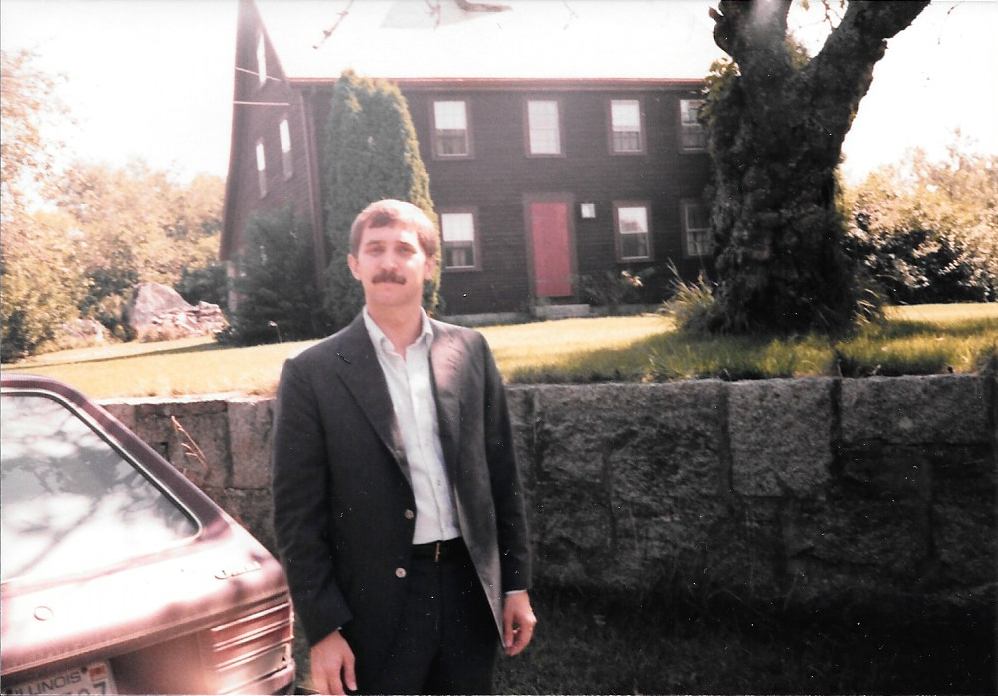

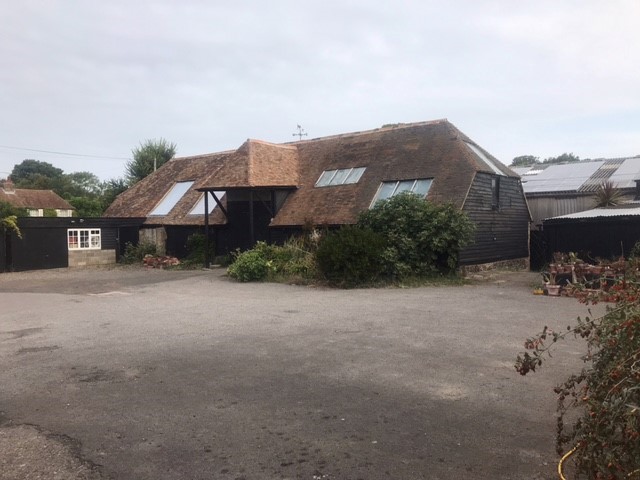






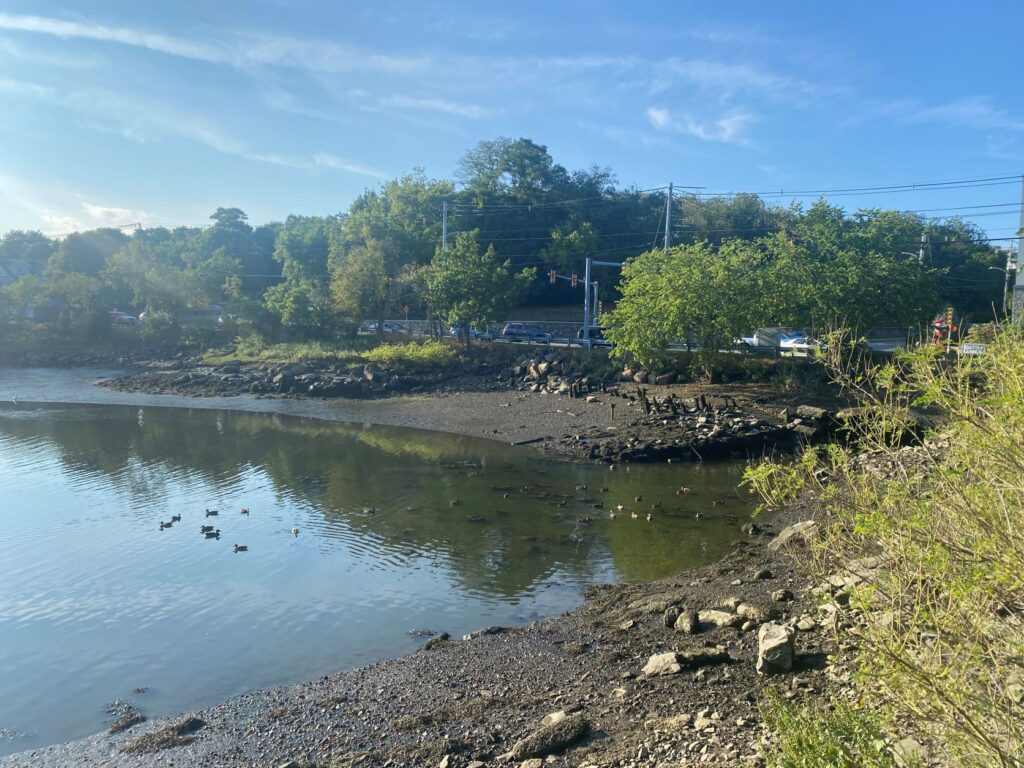
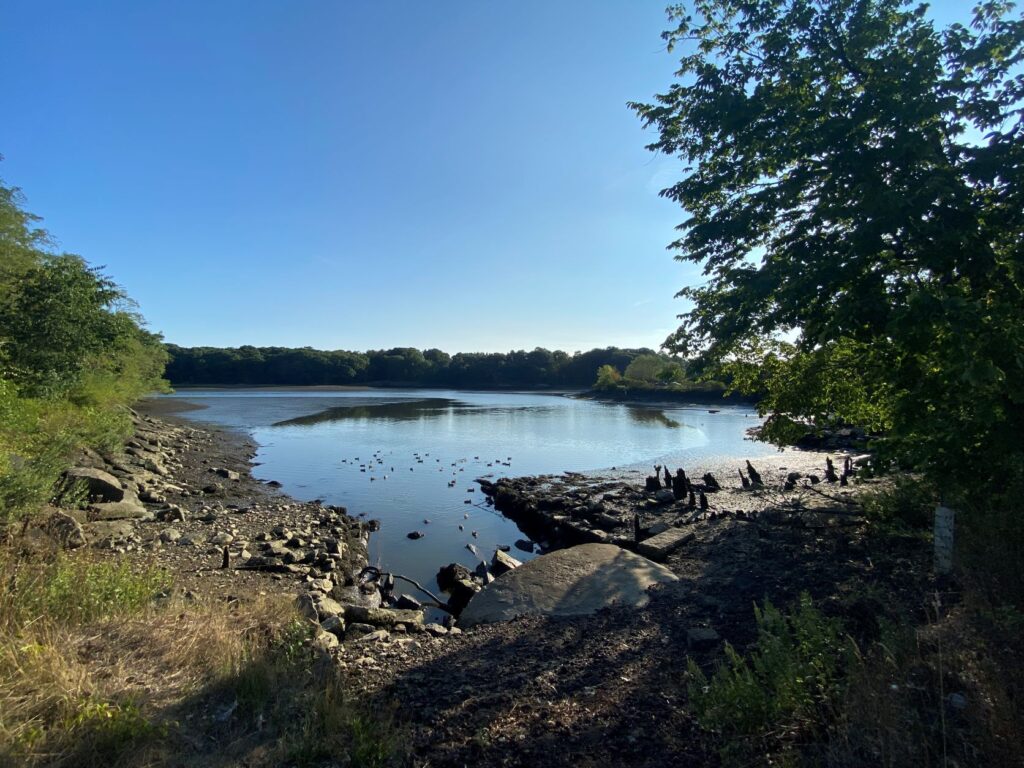
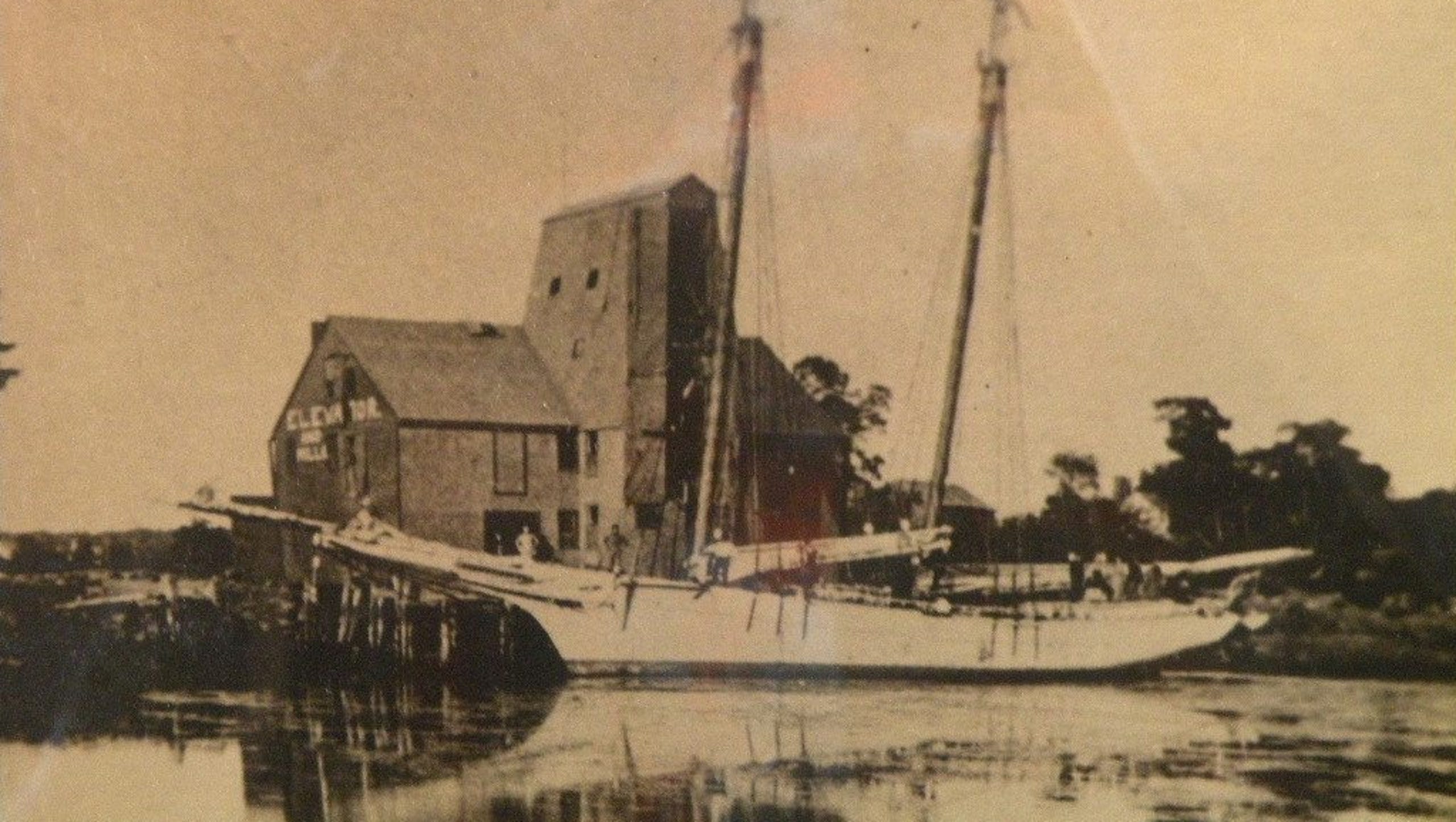 Society
Society  The Miles’ and Rowland- Spinkes’ were close political allies of Sandy Ezekiel and the Wises at this time, Peter Miles is godfather to Martin and Deborah Wise’s daughter. They have all since apologised to me, with hindsight for ‘backing the wrong horse’.
The Miles’ and Rowland- Spinkes’ were close political allies of Sandy Ezekiel and the Wises at this time, Peter Miles is godfather to Martin and Deborah Wise’s daughter. They have all since apologised to me, with hindsight for ‘backing the wrong horse’. 




 Members of the Friend Family, gathered on Sunday (9th Sept.) to celebrate the life of the late Rt. Hon. Lady Mary Crofton TD.
Members of the Friend Family, gathered on Sunday (9th Sept.) to celebrate the life of the late Rt. Hon. Lady Mary Crofton TD.
